Kodiak XL ProLube Oil Bath Hub Body and Cap - 2.440"

- All Info
- Reviews (142)
- Q & A (0)
- Videos (3)
- Photos
Kodiak Trailer Bearings Races Seals Caps - XLPROLUBE2440
- Caps
- Oil Cap
- 2.440 Inch
- Kodiak
Replaces (1) 2.440" body and cap for Kodiak XL ProLube oil bath hubs. Seals sold separately.
Features:
- Replaces body and cap for Kodiak XL ProLube oil bath hubs
- Clear blue polycarbonate cap
- Fits 2.440" hubs
- Includes 1 body and cap
- Seals not included
XLPROLUBE2440 Kodiak XL Pro Lube Oil Bath Hub Body and Cap
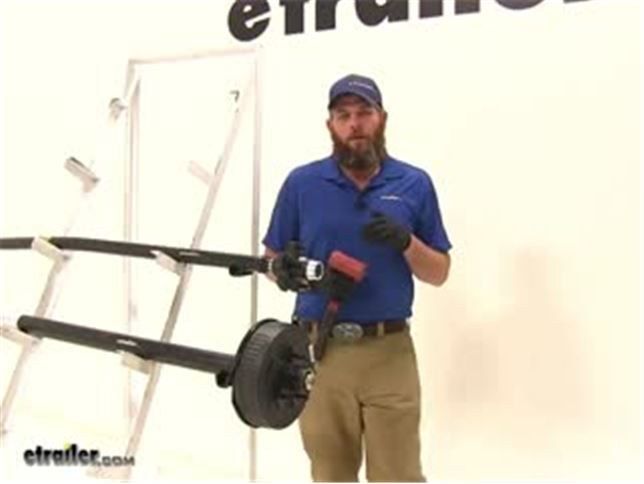

Videos are provided as a guide only. Refer to manufacturer installation instructions and specs for complete information.
Video Transcript for Trailer Bearings Races Seals and Caps Rebuild
Speaker 1: Today we're going to take you through the rebuild process on a couple of hubs. We've got an idler hub, and here we've got a hub and drum assembly. Works with electric rigs, but this can also work for just standard discs, if you've got a disc brake style setup.Basically what we're going to show you is how to get all of the bearings out. How to remove the seal. How to remove the race's if they're damaged, then get them replaced in the proper manner. We'll show you how to use an easy loop hub, which we have here.The first thing we are going to need to do is, get the grease cap off the end.
It can have either a rubber plug in it like this one does, or it can be a solid metal cap.These are pressed fit in there, basically by tapping on them on the back side. To remove them, a deadbolt hammer is typically what we're going to use. We're just going to start tapping as we go around. You'll see a little separation start right here, and slowly it'll work it's way off.Now the next step's going to vary a little bit depending on your axle setup. Do you see this is going to have a keeper that goes around the nut.
And that prevents that from being backed off, or removed. A lot of times you'll have a castle nut, which will have just little tabs that stick off, and there will be a cotter pin that passes through it. Just depending on your application, you need to get the keeper for the nut off. This style we just kind of pry out. A cotter pin you would just remove of course.Once we have that off ...
We'll start to take off the nut here, and the washer that's in behind it. Now yours should look a whole lot more dirty than this. There should be a lot of grease packed in, and through the hub, this one's brand new. We thought it'd be nice to show you the components before the grease was on .. Of our washer that comes off.And then here we're going to have our outer bearing.
Continue to pull that. We're gonig to have our inner bearing here. That sits in the backside of the hub. And we didn't put it in yet, we will show you how to put it in. But a seal would typically be covering the backside here. We'll show you how to use a seal removal tool, or another tool. To get that pried up and out. To get an access to that inner bearing.Now for a drum style like this, that process for disassembly is going to be just the same. One thing to keep in mind if you're using a disc brake setup. You'll have to remove the caliper before the disc is going to come off.Now once we have the spindle exposed, as we said this is going to be really greasy. We want to get all the grease removed, and the first thing we'll do is inspect it. We want to make sure that it looks just like what we have here. Everything's nice and smooth. We don't see any kind of discoloration, or any marring on the metal. Indicating that our bearing's got hot.If you do have any of those symptoms, at this point it's time to replace those bearings. You don't want to repack them. Get new bearings, and put in there. You might have a bearing that's come apart in here. Another surface to ensure is in good condition, is where your seal is going to go. That helps seal all the grease inside of our hub. With a damaged or broken seal, that grease is going to seep out. Either out of the hub, or in this case into our brake assembly.Now if your axle has brakes, we're also going to check the disc. Make sure it doesn't have any issues, or your hub. And this is going to be a hub and drum assembly. The brakes are going to ride on this machine surface. You're going to check that for signs of excessive heat, discoloration, or cracking. And this is our magnet surface. We'll check that surface for the same issues.Now inside the hub regardless if it's a disc brake, it's a drum brake like this. Or just a standard idler style hub. You're going to have an outer race. Would be right here, it's a small tapered piece of metal your bearing sits in, and rotates on. That's basically the outer portion of the bearing.You have the same thing here on the backside. This is called the inner race. Now if those show any signs of wear, overheating, or cracking. Those are also something we'll need to replace, which we'll show you how to do in just a minute.Now, with your brake assembly exposed, if you do have electric brakes like we have here. It's a good idea to check all the components for wear, cracking, maybe missing pieces. Check your pad thickness to make sure those are in good shape. Basically if you have a non working brake assembly and you put everything back together, you're just going to have to take it apart and do it all over again to get back to the brake assembly. This gives you a really good option to be able to change them out.And most applications are going to use a four, or maybe a five bolt flange to hold them in place. And you'll just remove the lock nuts, or sometimes you'll have a hex nut with a lock washer. You want to remove those, and then simply slide your assembly off after you cut the wiring.The friction material itself should also be checked for any kinds of cracking, or overheating. If you have any grease inside the system at all, it's likely it's gotten on those pads. It's a good idea to get those changed. Now as far as the removal of the races go, it's going to be just the same whether we're using an idler style hub like we have here. A drum brake like we have here. You can basically see where the idler is, here in the middle of the hub. It's going to go all the way around there, and we just have this extra material here to provide our braking surface.Now if you're doing a disc brake style job again, it's going to be just the same here with the races living inside of the actual hub portion. You'll just have the discs there for the brakes to make contact. We're going to use this little bit smaller one, it's a little bit easier to manage to show you how to get these out. We've talked about where the races are. The outer here, the inner being closer to the inside, but on the backside of the race there's a little lip. That lip's meant to stick out just a little bit further than the hub, and provide us an area to put our tool on, and help to drive that out.If you look all the way through there on that inner race, you'll see that little lip that sticks out just from the hub slightly, and it gives us enough area to use our tool on. Now generally to remove these you're going to use a punch, similar to this. Some guys will use a screwdriver. Or a piece of pipe. If you have a piece of pipe that's small enough to fit inside of that diameter, you can take that down through and allow it to rest on that lip.Use our punch, and then just need a hammer. And we'll start working that out. We're going to tap all the way around. Kind of equally, and evenly apply the force to get it to come on out of the bottom for us.You can see now as it starts to come out there's going to be a little gap created between the hub and the race. And we can just keep going, bringing it on out. Then you can inspect the inside of the hub surface there. Make sure no damage or anything has occurred, and repeat that same process for the outer race if you plan on removing and replacing that one.Now in the outer flat edge, you can see we're going to have our tapered edge on this side. If we roll our race over to the flat side, typically there's going to be a manufacturers part number on there. That will help you identify which race it is, that you need to go back in your system. If those are rubbed off, worn off, if you can't read them. You can measure the outside, to outside diameter of the race here. It's a good idea to use a micrometer to get it exact.Now here's your basic micrometer. And again, the outside of the race is what we're going to need to measure. You want to go . I set the thickest point there. Looks like this one's going to be about 1.98. That's going to be the measurement you'll want to supply.Now while we've got this out, let's also look at the proper way to measure our bearing. Instead of the outside for the bearing, we need to measure the inside diameter. That's going to be pretty simple. Let's pull that out, find the largest measurement we can. Which here, looks like it's going to be 1.03. With that information, we'll be able to get the correct bearing, and the correct race, so they'll fit together properly and make a full bearing kit for us.Now here's the race, we're going to show you how to get this put back in. Basically just going to press fit inside of our hubs. We need to get it down on there. Kind of like that. And you'll have a couple options. A lot of times you're going to see do it yourself or at homer, just going to use a wooden block. Just place it on there. That's going to get you started, but at that point you'll struggle in getting it to go all the way down into it's seat.Now to take care of that problem, there are several seal drivers that are available. Seal and race drivers that are available out there on the market. It's designed to fit down inside of our race, inside of our hub and get it down there where it needs to go. This is part number ptw83020, has several different sizes, even if you have multiple trailers it's going to do the job.Now the side with the angle on it, is designed to fit down inside of our race. If we use the other side, that's going to be for driving your seal into place. Just want to hold it, and take it on in with your hammer. You'll see, you just want to insure that our race is all the way up against that line on the hub where it's supposed to mate to.Now when it comes time to pack your bearings you're going to have several different ways of doing this. You can just use your hand, is the traditional method. That's going to be the method probably reserved for the very occasional trailer work kind of situation. If you do it once or twice a year, probably get away with it that way.Next you would go to a, kind of a sandwich funnel style almost. If you look inside of there, you can see the bearing. It's located between the two pieces. Just use a grease gun. Start filling that with grease, and that's going to fill our bearing for us. And the third, with this one you're just going to place your bearing down and in. It should be pretty close to center. And then we've got our cone her that's going to go down and secure that.Now I think this style, wastes a little bit more grease than what this style will. This has a dust cap. You can see, you can keep your grease in there, put your dust cap on there and save it for later use. This will be if your going to do it every couple years. And this particular style would be if you're a more regular user.Let's start by showing you how to use a bearing packer. Similar to this. Again, we've just got our grease inaudible 00:11:07 here on the top. And then just slowly start to fill it. Now I like this style quite a bit. I think even regular users might enjoy it, because you can get a really quick visual look at that bearing. You're not going to have to overdo it, or have to much grease.You can kind of see in there now, we're starting to get grease to come out of it. Couple more pumps, we'll be good. You can see we've got grease coming out all the way around. Where all of our bearings are. Got a little bit of excess there. Just take that around the outside of it. And then we should be able to lift it off. And now you can see what we we're talking about. Just a little bit of excess there, that you're just going to wind up wasting.Now we'll take our bearing, we're going to place it right down in our race. And then we'll cap off the back with our seal. Right now our seal's going to fit in just like our race did. It's going to have a little bit of a pressure fit to it. Now very often in this situation, I see people using the four by four method. Kind of here, just placing that on and tapping it. As an option though, if you do have one of these. You can see that's designed to fit right on the top of the seal. And help drive it in.The biggest thing here is, just going to be getting it driven in squarely. You can see, this side's in a little bit further than this side. I'm going to start this side first. Now since we didn't have the opportunity to show you before, we're going to take a look at pulling a seal. Now this is a seal puller, we carry this on our website part number ptw1219. This is meant to hook underneath the seal. And then you kind of pull up on it, and just like our race you'll have to work all the way around that edge. Just bringing it out a little at a time.If you don't have that available. Another option would be a screwdriver. You just kind of get that under the seal, and turn it. And see, that'll allow you to also pop that out. We've taken care of our race. Our inner bearing. Our seal. The last component, before we put our hub back in place is going to be our outer bearing. Now with this bearing, I'll show you the hand packing method.This is definitely . Slightly dirtier method than the bearing packer. When we get grease on our hand we want to look at the larger side of the bearing. This is the smaller side. We have a larger side In between the inside and outside there's a gap. We can see our rollers in there. We want to grab that, and use that gap and shove grease inside of it. Now this is going to take a little bit, you want to work in the same spot until you get the grease pushed all the way through. We can see on the top there we've got a little bit starting to come through.And once we push it in the bottom, and you see it start coming out the of the top in those little drips, it's going to indicate that, that section's fully packed. Just need to work all the way around their outside edge now and do the same thing. Alright, once that's all the way around . The bearing will be ready for use.Now one more thing I like to do. We can see our inner bearing there, and our outer bearing. Well between the two, got a pretty big gap in there. If you'll take a . Pretty good amount of grease. We're just going to go all the way around. See how we can go all the way around the inside and just line that really well. The more grease we have in here, the less chance we have of any moisture getting in there, which can cause corrosion, rust, pitting. Pretty much things we do not like when it comes to bearings, races, and hubs.Put plenty of grease in there. And then this one does have the easy lube spindle, that'll even fill it in more. Now we can get our assembly slid on. I like to keep my thumbs on that outer bearing, just to prevent it from . inaudible 00:15:28 pushed off there. Now we can put on the original hardware that we removed, in taking off our hub the first time. In our case, we had our washer and our nut.Now most commonly you'll see pliers similar to this being used. We basically want to get that tightened down. Once it's fully tightened down you'll feel some resistance in the hub. We back it off just slightly. That'll give us a little bit more freedom of motion there. Something you don't want however . Is any movement in, or out on your hub. You want to be sure that everything is compressed, and you don't have what's called end play. Which would be the play in and out.Once we've got that set, then you'll put on whatever tight keeper yours came with. Get that put back in place. Now with an easy lube style hub, you're going to place your grease gun on the end, and then you can just fill the remainder of that hub up.Now for your typical applications, you're either going to have a solid cap, or a cap that'll have a rubber plug in it. A solid cap's going to be for an axle without the grease inaudible 00:16:51 here on the end. Goes on there. Just knock it on with your rubber mallet. Same with the one with the plug. Just gives you a removable area there, be able to cap that off.We'll show you how to put that on. Now as alternatives as well, a lot of times on boat trailers and marine kind of situations. You'll see a bearing buddy. This is going to apply a little bit of pressure on the grease, you'll fill it up. This kind of comes out just a little bit. That applies constant pressure on the grease to make sure we don't have any air, or anything like that. Then there is also an oil bath hub available. Now this is going to be for use with seals that are going to be designed specifically for oil bath use. You'll have to change that seal.We're using a double lip seal. There are also single lip seals available. Of course a double lip seal is going to give you just a little additional security. Keep that in mind when you order. But let's get this knocked on there now so you can see how that works. We just want to take the cap, we're going to center it. This is going to be very similar to what we did with the seal. And then just gently start tapping it around the outside. And it'll seep down on there for you.It's really going to be the same thing that you'll do with any of the end caps. Now with this side done, it's a good idea to take care of all the other hubs. Get them all on the same maintenance schedule. And as long as you'll periodically check the grease, take your trailer out for a trip occasionally. Just to keep everything lubricated. It should extend the life of these parts, and give us years of good service.
Customer Satisfaction Score:
94% were satisfied with this product
6% of customers were not satisfied
- Wrong item was ordered
Customer Reviews
Kodiak XL ProLube Oil Bath Hub Body and Cap - 2.440" - XLPROLUBE2440
Average Customer Rating: 4.3 out of 5 stars (142 Customer Reviews)
Replaces (1) 2.440" body and cap for Kodiak XL ProLube oil bath hubs. Seals sold separately.
These are great. No more grease seals blowing grease all over my disc brakes. Took a 2500 mile trip, worked perfectly.

I purchased this as a way to easily access my Bearing lube axles, and still be waterproof (it's a boat trailer) build quality is very nice, however it is allumminum and It got marred up when I installed, so I just went back to the original caps.

I installed Kodiak wet hubs on my fifth wheel about 3 years ago. At least once a year, one of the polycarbonate caps cracks within the threads and produces a slow leak of oil. I made my own aluminum wrench for the caps and don't tighten them down much more than wrist tight (about 15 FT LB) so it must be inherent with these polycarbonate caps. Anyways ... etrailer sent me what I needed with fast shipping.
Put these on our 5th wheel travel trailer several years ago. Easy to install and never have to repack wheel bearings. Just check the oil level and go. Only issue we've had was when the tire people cracked the plastic cap while installing new tires. I will definitely put these on future trailers.
Needed these caps quick as my originals had cracked. Shipping over night is always expensive but etrailer came through and got me my parts and saved the fishing trip

There parts arrived on time and fit my boat trailer perfectly.

Don't know if it was these being too big or your hubs being to small. Extremely tight fit. Did get them halfway seated and had a tough time from there. Most likely will have to destroy them when I have to remove them
They are the right parts I ordered, but they took a long time to arrive. Other than that, no problems.

I have been thru 3 rear seals in 500 miles and 2 Plastic caps with this Kodiak 3500 XL lube kit,ridiculous.One cap was cracked upon purchase.My Trailer has all NEW parts 100 %. I have bought 3 extra caps,4 extra bottles of bearing lube. I now leave my decorative logo caps off so I can check my bearing lube every fuel up stop.I'm stubborn because I will not let this stupid system leaking beat me, I must stop the leaking! PS apparently I am the stupid one.

Inner seals leaked immediately. Gave up after 30 miles and went to bearing buddies.

The caps were a direct replacement for our customer and are a perfect fit!!

Wish I hadn't converted my std. grease hubs to oil bath hubs. Of the 4 hubs I converted, one keeps leaking. This will be the third re-build of that hub. Seems the rear seal keeps leaking. Ugh!

Great concept and well made product that would work well on over the road trailers.
I used them on a boat trailer with new axles and the first time I submerged the trailer water was introduced to three of the hubs. I had to go back to bearing buddies.
Right part an received within 5 days

They leak at the O ring a bit

So far in one year I've been through about 7 Seals. They flat out leak. I found better luck by soaking them in gear lube before installing them. The way they're designed with an inner and outer section that seal against each other to allow it to spin with the Hub yet seal to the spindle seems to not be Lubed enough. Another issue I've had is the caps. I've been through several caps from leaking as well. I've had three caps with spider cracks. at first I assumed it was from me over tightening but after I replaced them being that they have an O-ring I just hand tightened them. two out of the four caps that I replaced and only hand tightened were cracked again. Let's just say it's been a very expensive year in comparison to just dealing with greased bearings. Really this should be a far superior system but until they get the seals and caps from failing, I'm going back to grease
I installed the oil bath system per the instructions, it was easy to install, the tips I would give anyone is to take your time when installing the rear seal. Its very tight, so take your time and use a solid round object and make sure it goes on perfectly straight. It was all straight forward as far as installation, what I found different was after installation. I noticed that instead of the seal rotating over the axel, the seal stays affixed to the axel, and the outer race, between hub and seal is what moves. I've never seen this before. So I called etrailer and spoke to customer service. They checked and said because this is an oil bath system its normal for the seal to stay stationary and the movement is between hub and seal. I spent a lot of time cleaning the axel were the seal normally rides. However it seams you don't have to. I hope they are right. I'm going to follow-up after I haul some heavy loads and let you know how it goes.
Thanks
I have used these hubs a dozen times and I think they’re the greatest thing since sliced bread. The lubrication of the bearings with a liquid is far superior then any grease I’ve ever seen. And the ability to check at a glance and know your bearings are protected and you can change the lube without making a mess there just plane great
As far as the product goes it is average at best. These were replaced last spring and were leaking by the fall. As far as etrailer goes they are fantastic, fair pricing,fast shipping and great communication. I would definitely recommend using etrailer.

I purchased 4 of these to do all my bearing on the trailer when they went bad. I have had to us three of them on the same wheel, as it kepts leaking after a couple of months. It is always around the rubber seal in the front of the hub. None of my original hubs have gone bad in that time frame. I need to find a different brand before I get stranded somewhere I can't fix it.
See what our Experts say about this Kodiak Trailer Bearings Races Seals Caps
- Threaded Cap Thread Dimensions For Kodiak XL ProLube Kit 2.440 # XLPROLUBE2440KITThe Kodiak XL ProLube Kit # XLPROLUBE2440KIT has a cap with the threads being 2-3/8" diameter and 12 threads per inch. We do carry the Kodiak XL ProLube Oil Bath Hub Body and Cap # XLPROLUBE2440 and Replacement Center Plug # XLPROLUBE-PLUG separately from the main kit. They do not sell the caps individually.
view full answer... - Recommended Solution to Protect Bearings From Water on Boat TrailerThe Kodiak # XLPROLUBE2440 is designed to replace the body and cap for a Kodiak XL ProLube oil bath hub. Since you are using grease and have a Dexter axle, it sounds like you have an EZ Lube axle with a zerk fitting for adding grease and a grease cap plug on the end. Assuming that is the case, you do not want to use the # XLPROLUBE2440. Instead, I recommend adding Bearing Buddy Bearing Protectors like the # BB2441SS or the threaded # BB2441T-SS. These are specifically designed for marine...
view full answer... - Availability Of Oil Bath Hubs For Boat Trailer With 7000lb AxlesThere are a few options for oil bath hubs for a boat trailer with 7000lb axles though I will start with saying that oil bath hubs are not recommend for a boat trailer due to the oil braking down very fast when water is introduced unlike grease. The first is a disc brake option which is the Kodiak Disc Brake Kit - 13" Hub/Rotor - 8 on 6-1/2 - Dacromet and Stainless - 7,000 lbs # K2HR712DS. This system includes races but you will need inner bearing # 25580 and outer bearing # 14125A. Now...
view full answer... - Parts Needed To Convert a Triple Axle Toy Hauler With 5,080LB Axles To Disc Brakes 6 on 5-1/2 Bolt While we do not have a specific kit for your triple axle toy hauler with the 5,080lb axles we do have all the parts you will need. You will need to verify the bearing and grease seal sizes used on your axle to ensure I have all the correct parts listed below. You should have a grease seal with ID of 2.25", inner bearing ID of 1.75" and outer bearing ID of 1.25". Please let me know if you have something different otherwise here is a list of all the parts you will need. Kodiak Disc Brakes...
view full answer... - How to Determine the Correct Oil Bath CapTo figure out the correct oil bath cap, you will need to know your axle's capacity or size of your hub bore. For a 3,500 lb hub or 1.98" hub bore you would use Kodiak XL ProLube Oil Bath Hub Body and Cap # XLPROLUBE1980, or for the kit you would use # XLPROLUBE1980KIT. If your axle had a capacity of 5,200 lbs or 6,000 lbs, or 2.44" hub bore you would want Kodiak XL ProLube Oil Bath Hub Body and Cap # XLPROLUBE2440 or if you wanted the kit you would use # XLPROLUBE2440KIT. I've added links...
view full answer... - Suspension and Disc Brake Upgrade for Grand Design Momentum 398MI have some great options for you to upgrade the Grand Design Momentum 398M such as the Roadmaster Comfort Ride Leaf Spring Suspension Kit part # RM-2460-2570-3 which will help drastically increase ride quality/performance and the HydraStar Disc Brake Kit w/ Actuator for Triple Axle Trailers part # HSE7K-TR1 which will increase stopping power. They can be converted to oil bath with the Kodiak XL ProLube Oil Bath Hub Body and Cap part # XLPROLUBE2440 and Oil Seal part # 9103309. Unfortunately,...
view full answer... - Parts Needed To Change Trailer Hubs From Grease To Oil BathIn order to be able to change your hubs from using grease to an oil bath you need a couple items. For the hubs you said have an inner diameter of 2.44 I recommend the Kodiak XL ProLube Oil Bath Hub Body and Cap, part # XLPROLUBE2440. This has the hub body that fits in your hub and a cap with threads. You will also need the Unitized Oil Seal, part # 10-63 for your hubs. This is a dual action seal. The inner part of the seal stays fixed in place on the spindle and the outer part turns...
view full answer... - Which Oil Bath Cap Do I Need on a 2003 EZ Loader TrailerIn order to determine the correct oil bath cap you'll need to measure your hub bore or find the weight capacity of your axle. If you have a 3500 lbs. axle or a 1.98 inch hub bore you will want part # XLPROLUBE1980 or # XLPROLUBE1980KIT for a kit that includes caps, seals, and oil. For 5200 or 6000 lbs. axles that have a hub bore of 2.440 inches you will need # XLPROLUBE2440 or # XLPROLUBE2440KIT for the kit.
view full answer... - Can Kodiak Oil Bath Body be ReusedYou are right that the Kodiak XL ProLube Oil Bath Hub Body and Cap - 2.440" # XLPROLUBE2440 will be damaged when removed, and is not meant to be reused. It acts as part of the hub, essentially, so if you remove it you will need to replace it as well.
view full answer... - Parts Needed To Swap From Grease To Oil Bath For 7K Axles To swap over to oil bath you can just swap out the bearings, grease seal, and caps but I'll need a bit more info in order to determine the correct fit for your setup. If you don't need to trailer for a bit you can remove one of the hubs and check the face of the outer bearing for the part number. You can then look at the grease seal for it's part number and pop it out to check the inner bearing. Once we have these part numbers we can determine the correct replacements. If the part numbers...
view full answer... - Recommended Synthetic Bearing Lubricant for Kodiak Oil Bath HubsIn your oil bath-type hubs you will want to use any 80- or 90-weight synthetic gear oil. My contact at Kodiak confirmed that the brand of oil is not important but that use of a synthetic oil in this viscosity range is what matters. As it happens though, the brand of synthetic 90-weight bearing oil we offer is Kodiak, part # XLPROLUBE.
view full answer... - Options For Replacing A Tie Down Turbo Lube 48394 Clear Oil Bath CapThough we do have the Bearing Buddy # BB2441T-SS that is a direct replacement for Tie Down's Turbo Lube oil baths, this will require you changing over to grease instead of oil. With that said, we do also have the Kodiak XL ProLube Kit # XLPROLUBE2440KIT (or # XLPROLUBE2440 as a single cap) that will measure the same, but the end that sits in the hub is not threaded. To get this to fit, you would either need to have the ends of the caps threaded, or have the threads turned down on your...
view full answer...
Do you have a question about this Trailer Bearings Races Seals Cap?
Info for this part was:









At etrailer.com we provide the best information available about the products we sell. We take the quality of our information seriously so that you can get the right part the first time. Let us know if anything is missing or if you have any questions.










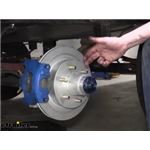
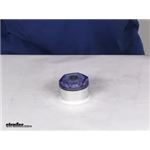




















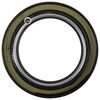





























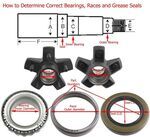
Thank you! Your comment has been submitted successfully. You should be able to view your question/comment here within a few days.
Error submitting comment. Please try again momentarily.